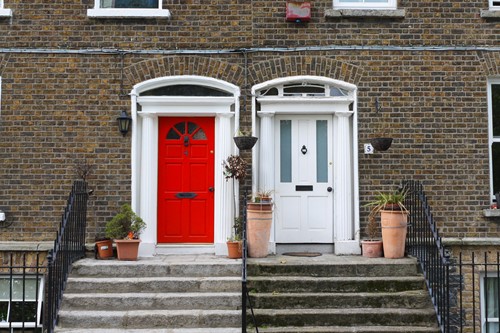
When climate-controlled air escapes or gaps allow non-climate-controlled air inside, heating and cooling system are forced to work overtime. Although frugal people often calculate the cost benefits of replacement windows to reduce energy loss, entry and secondary doors also have a significant effect. A poorly insulated door with even small gaps around the casing can create ongoing drafts. If you are considering replacing an outdated or inefficient door, these are things to consider.
1: Choose an energy-efficient material
Fiberglass doors are widely considered the most energy-efficient because they are poor heat conductors. Materials that absorb energy such as heat and cold transfer it from the outdoors through your door. For example, when the temperatures outside are below freezing, the door radiates those temperatures into the home.
This process might seem like a nominal cost driver, but energy efficiency is about tightening heat and cold losses. Following fiberglass, vinyl, steel and wood provide energy efficiency in descending order.
2: Glass panes can be energy efficient
Although glass conducts heat and cold easily, this facet does not necessarily mean home, and commercial building owners should avoid them. The ability to see outside and the infusion of natural light into the space also provide value.
Just like windows, doors panes offer varying degrees of energy efficiency. When selecting a product that serves your needs, conduct some due diligence about glass ratings.
3: Material fluctuations cause energy loss
One of the reasons industry professionals typically rank fiberglass, vinyl, and steel ahead of wooden doors stems from expansion and contraction. Wood suffers swelling and tightening far more than the other materials, which means cold weather generally causes the door to shrink and allows increased drafts to leak in. Wooden doors enjoy natural beauty, but the heat loss can be significant.
When choosing the best door for your needs, energy efficiency ranks among many factors. A sound decision also weighs appearance, durability, security, cost and other items. The right door helps reduce utility bills and makes homeowners feel good in many ways.
About the Author

John Hassler
Our goal is overcoming the housing challenge and getting to know one another, here is a bit about me. Providing you with professional guidance for buying and selling homes stems from an in-depth knowledge of the Twin Cities Best Homes and Neighborhoods. For us, the process is a simple one and starts with a conversation about your needs, desires and concerns. No contracts or promises up front. I ask only for the opportunity to understand your housing needs and have you become comfortable with my real estate knowledge and experience. I have lived throughout the metro area, have sold close to 1000 homes as well as built, remodeled and designed homes. My passion is assisting you in discovering that perfect home, location and setting that will bring you and your family pleasure and comfort for years to come. I would enjoy the opportunity to meet with you at your home, business or over a cup of coffee. I am readily available by email, text and enjoy a phone call as well. Please don’t hesitate to contact me, as I always enjoy a new opportunity to help someone!
